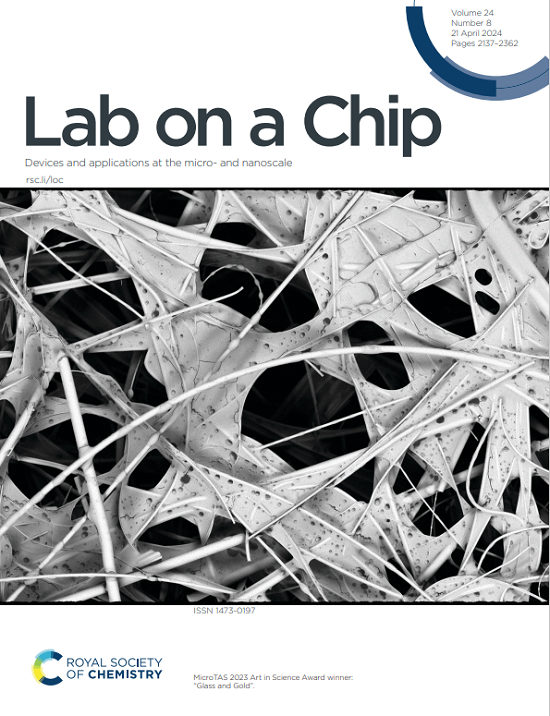Active droplet generation in flow-focusing microfluidics under influence of transverse magnetic field
IF 5.4
2区 工程技术
Q1 BIOCHEMICAL RESEARCH METHODS
引用次数: 0
Abstract
Magnetic fields can be used to control the process of magnetic fluid dispersion in microfluidics. Here we demonstrate a method for generating magnetic fluid droplets of a given size and shape in a microfluidic chip with a flow-focusing configuration under the influence of a transverse magnetic field. The results of the study show that at low volumetric flow rates of the continuous phase, the magnetic field plays the main role in ferrofluid dispersion. With increasing magnetic field strength, the droplet diameter decreases according to the law Dd~H^(-1⁄3). With increasing continuous phase velocity, shear stresses begin to play the main role in ferrofluid dispersion. In this case, the droplet diameter depends on the continuous phase velocity according to the law D_d~u^(-1). The pressure gradient in the channel and the magnetic field contribute to droplet deformation. The thickness of the deformed droplet decreases with increasing volumetric flow rate according to the law l~q^(-1). The non-uniformity of the velocity field distribution over the channel thickness is responsible for droplet coalescence. The magnetic field, on the contrary, prevents droplet coalescence. These findings open up new possibilities for generating soft magnetic robots of a given size and shape.横向磁场影响下流动聚焦微流体中主动液滴的产生
磁场可以用来控制微流体中磁流体的分散过程。在这里,我们展示了一种在横向磁场影响下具有流动聚焦结构的微流控芯片中产生给定尺寸和形状的磁流体滴的方法。研究结果表明,在连续相的小体积流速下,磁场对铁磁流体色散起主要作用。随着磁场强度的增大,液滴直径按Dd~H^(-1⁄3)规律减小。随着连续相速度的增加,剪切应力开始在铁磁流体色散中起主要作用。在这种情况下,液滴直径根据D_d~u^(-1)定律与连续相速度有关。通道内的压力梯度和磁场是液滴变形的主要原因。变形液滴的厚度随体积流量的增加而减小,并遵循1 ~q^(-1)的规律。速度场分布在通道厚度上的不均匀性是液滴聚并的主要原因。相反,磁场阻止液滴聚并。这些发现为制造给定尺寸和形状的软磁机器人开辟了新的可能性。
本文章由计算机程序翻译,如有差异,请以英文原文为准。
求助全文
约1分钟内获得全文
求助全文
来源期刊

Lab on a Chip
工程技术-化学综合
CiteScore
11.10
自引率
8.20%
发文量
434
审稿时长
2.6 months
期刊介绍:
Lab on a Chip is the premiere journal that publishes cutting-edge research in the field of miniaturization. By their very nature, microfluidic/nanofluidic/miniaturized systems are at the intersection of disciplines, spanning fundamental research to high-end application, which is reflected by the broad readership of the journal. Lab on a Chip publishes two types of papers on original research: full-length research papers and communications. Papers should demonstrate innovations, which can come from technical advancements or applications addressing pressing needs in globally important areas. The journal also publishes Comments, Reviews, and Perspectives.
 求助内容:
求助内容: 应助结果提醒方式:
应助结果提醒方式:


